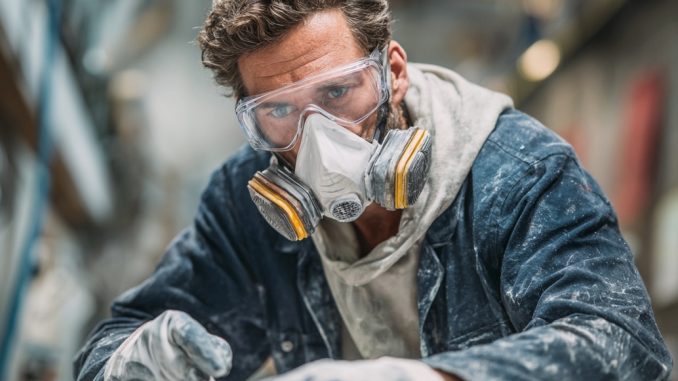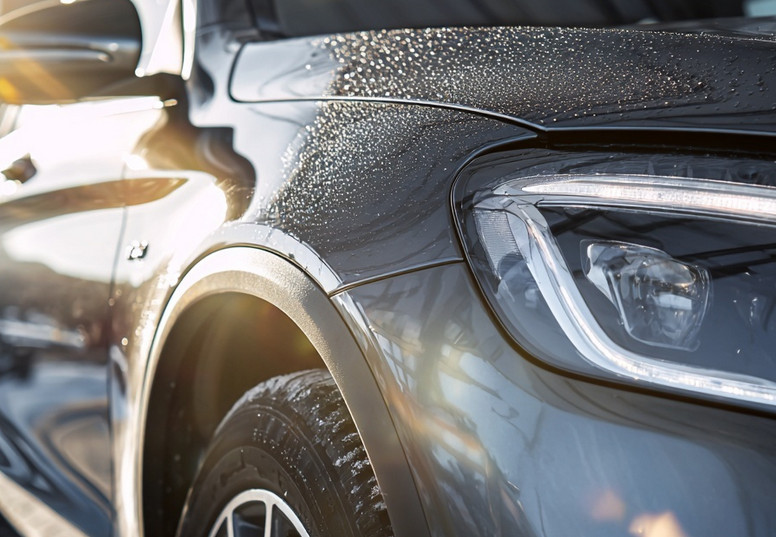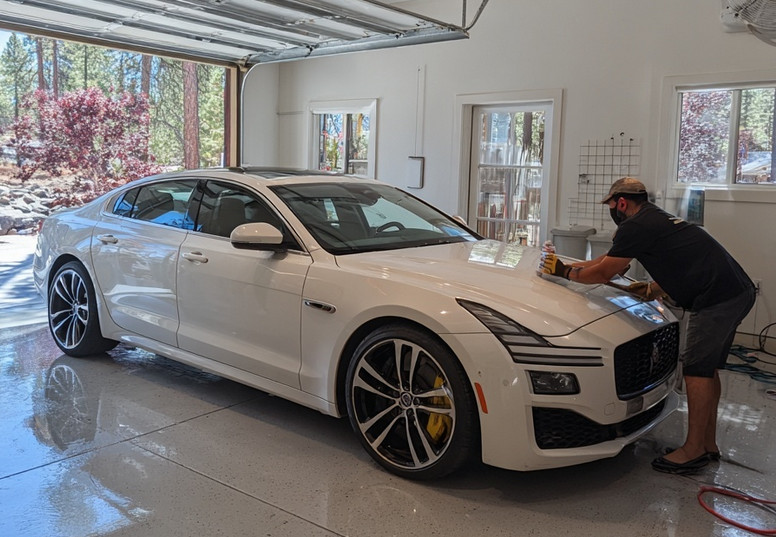
Ceramic coatings have become the go-to upgrade for car owners who want to protect their vehicle’s paint, cut down on maintenance, and get that sleek glossy finish that seems to whisper, “yeah, I take care of my stuff.” But beneath the hype, there’s a growing curiosity around what’s actually in these coatings, how they affect your health, and whether all that chemical wizardry is something you should be concerned about. If you’ve ever caught a whiff of a detailing product and thought, “that can’t be good for my lungs,” you’re not alone. Let’s talk frankly about what’s in these coatings, how to stay safe while using them, and whether you need to worry after the job is done.
What Is a Ceramic Coating?
At the heart of every ceramic coating is something called silicon dioxide, or SiO₂. This is a naturally occurring compound found in sand and quartz, but when engineered into a liquid formula and applied to a car, it forms a hard protective layer that bonds to the paint. It’s designed to be super slick, water-repellent, and resistant to UV rays, road salts, tree sap, bird droppings, and whatever else the outside world throws at your car.
The coating doesn’t sit on top like wax. It chemically bonds with the clear coat, forming a semi-permanent shield that can last years instead of months. That’s why it’s become so popular with both car enthusiasts and regular drivers who want to save time and effort when it comes to washing their car.
But all that durability comes from a mix of ingredients that include solvents, resins, and carriers that help the coating level out and bond properly. And that’s where the health concerns start to enter the conversation.

Understanding the Health Concerns
VOCs (Volatile Organic Compounds)
Volatile Organic Compounds, or VOCs, are a group of chemicals that evaporate into the air at room temperature. You’ll find them in things like paint, cleaning products, and adhesives, and yes, in many ceramic coatings. The reason they matter is that once airborne, VOCs can irritate your eyes, nose, and throat, trigger asthma symptoms, and in high enough concentrations, have longer-term health effects.
Most of the time, the strongest VOC emissions from ceramic coatings happen during the application and curing stages. That’s when the coating is being wiped onto the car and allowed to bond with the paint. If it’s being done in a closed garage or without proper ventilation, the fumes can build up quickly. You may not notice anything more than a chemical smell at first, but over time or with repeated exposure, that stuff can start to cause headaches, dizziness, or even breathing trouble.
Some brands are working to reduce VOC content, but not all are created equal. And unlike food products, there’s no handy ingredient label on most detailing chemicals. So, the best way to keep yourself safe is to know what to look for and how to handle the application process carefully.
Off-Gassing
Off-gassing is the process where chemicals continue to release fumes after application. Think of that “new car smell” or the scent of fresh paint. It’s not the smell itself that’s the problem. It’s what causes the smell that matters. In the case of ceramic coatings, some continue to emit VOCs or other compounds for hours or even days after the initial application.
This typically happens during the curing phase, which is when the coating hardens and forms that solid layer on the car’s surface. Depending on the formula, humidity, and temperature, curing can take anywhere from a few hours to several days. During this time, the vehicle should ideally be in a well-ventilated space. Sitting inside a recently coated car and driving with the windows up during this period is not a great idea, especially for folks with allergies, asthma, or chemical sensitivities.
Application Hazards
Applying ceramic coating might look easy on YouTube, but in reality, it’s a process that needs some basic safety steps. Most professionals apply coatings in open, ventilated spaces or shops with proper airflow systems. They wear gloves to avoid skin contact and often use masks or respirators to avoid inhaling any fumes.
DIY enthusiasts sometimes skip these steps because the packaging doesn’t always scream “hazard,” but the truth is, if a product smells like solvent, your body probably doesn’t want it in your lungs.
Using the coating outside in fresh air is a good first step. Gloves are a must, and if the product seems particularly strong, using a basic mask can save you from a bad headache later. And never store these bottles where kids or pets might get curious. They’re not toys, and definitely not something you want to spill on your hands or carpet.
We’ve talked with the team at MobiGleam Vancouver https://www.mobigleam.com/ceramic-coatings-vancouver/ about this, and they stress that safety gear and proper ventilation aren’t optional, especially when applying high-end ceramic products. Their pros follow a tight process to ensure both the applicator and the customer aren’t exposed to lingering fumes or skin contact risks.
Are Ceramic Coatings Safe After Curing?
Here’s the good news. Once a ceramic coating is cured properly, it’s generally considered inert. That means the chemical reactions have finished, and it’s no longer off-gassing or releasing VOCs. So unless you’re licking your car’s hood (and if you are, please don’t), the risk of exposure to active chemicals after curing is extremely low.
The coating becomes part of the paint’s top layer, and you’re no longer interacting with any solvents or reactive ingredients. You can touch it, wash it, wax over it, and drive around without worry. If the application was done in a safe, ventilated environment and the car was allowed to cure completely, you’re in the clear.

How to Apply Ceramic Coatings Safely
Whether you’re a weekend DIYer or a small detailing business, safe application comes down to a few core habits. Always read the instructions, because even similar-sounding products can have very different application needs. Ventilation should be your first priority. Open garages, outdoor workspaces, or spaces with strong fans are ideal.
Wear gloves. No exceptions. These coatings aren’t meant for skin contact, and some can be extremely difficult to wash off. If a product smells harsh or gives off visible vapors, consider a mask, even a basic dust mask if you’re outside. If you’re working indoors, a respirator rated for organic vapors is worth investing in.
Give the car time to cure. Don’t rush to drive it around or roll up the windows and sit in it. Let the fumes settle, let the coating bond, and let your lungs stay out of the chemical equation.
Eco-Friendly and Low-Toxicity Ceramic Coating Brands
If health and safety are top of mind, it’s worth looking into ceramic coatings that are formulated with fewer or lower-toxicity solvents. A few brands are making strides in this area.
Gyeon’s Q² Pure EVO is a good example. It’s known for its relatively low VOC content and is ISO certified, meaning it’s been tested for consistent quality and safety. CarPro’s CQuartz UK Edition is another favorite among detailers who want strong performance without overwhelming fumes. They’re transparent about what goes into their products, and you can usually find safety data sheets right on their site.
GTechniq’s Crystal Serum Light also gets points for being more conscious of environmental and human safety, especially when applied by pros who follow proper safety procedures. Ethos Ceramic Wax Pro is something of a hybrid product, blending the ease of wax application with the protective benefits of ceramic coatings, and it tends to have a lower chemical load overall.
If you’re unsure about a product, check if the manufacturer provides an MSDS (Material Safety Data Sheet). It won’t be as easy to read as a food label, but it’s the best place to see exactly what you’re dealing with.
Making the Smart Choice
Ceramic coatings do involve chemicals that should be handled with care, especially during application. But with proper safety measures, the health risks can be kept low. Once the product has cured, most coatings become stable and safe to be around.
If you’re someone who’s sensitive to strong smells, has breathing issues, or just wants to make a healthier choice, it’s worth spending a little extra time researching the product or letting a pro handle the job. And when you do, don’t be afraid to ask questions about what products they’re using and how they manage ventilation and safety.
A great-looking car doesn’t need to come with a side of mystery fumes. Knowing what you’re putting on your vehicle, and how to do it safely, is a smart move that keeps you protected while still letting your car shine like it should.




